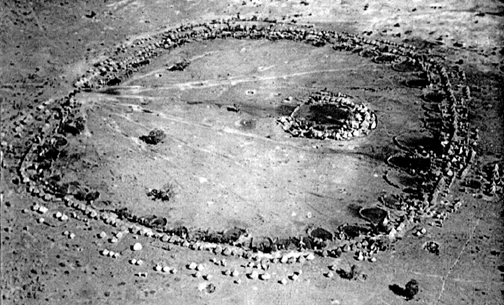|
Simulation for the Ba-ila village on the previous page. Click on the first iteration and note the position of the altar (single line) toward the back of the house. Then click on the second iteration: now the altar has become the main house in the corral. A thrid time and the main house becomes the chief's family village, inside the village as a whole. New York architect Bernard Tsuchmi experimented with this simulation when exploring designs for a museum of African Art. See if you can adapt this shape for a contemporary building. |
 Why do the corrals get bigger going from the front entrance of the village to the back? This is a status gradient: the families with the most livestock will be in the back, and those with the least in the front. Why do the buildings get bigger going from the front of the corral to the back? Another status gradient: the livestock are toward the front and humans toward the back. And it is for that same reason that the altar is toward the back in the smallest scale, and the chief's family village is toward the back at the largest scale. |